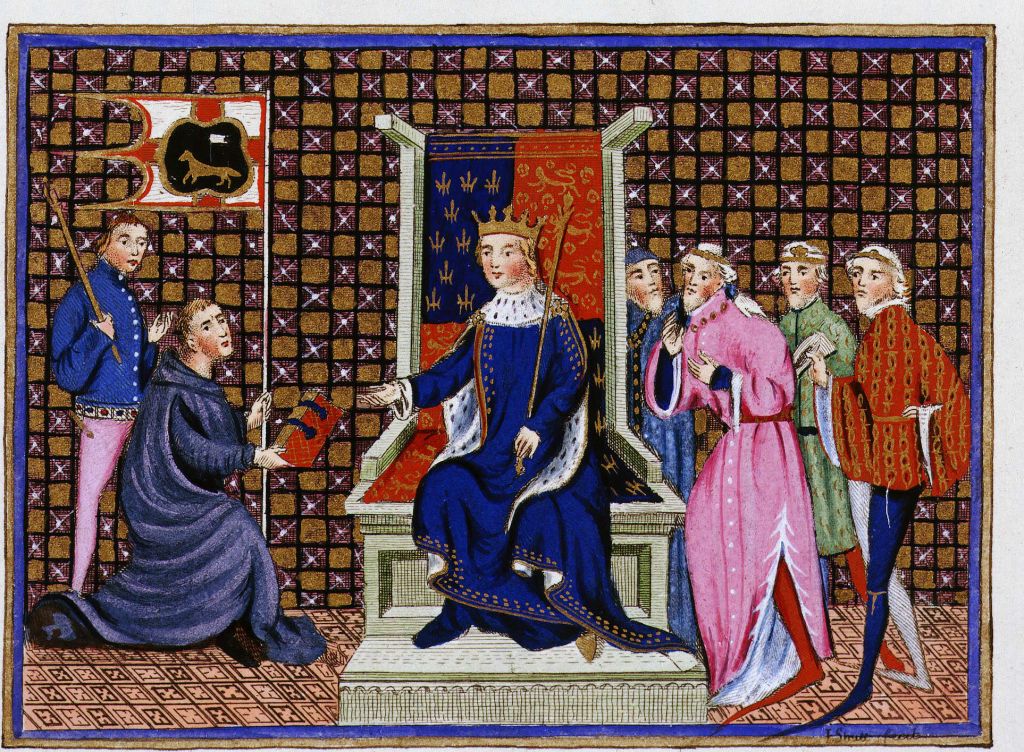[ad_1]
Instagram is typically given over to selfies and vacation photos—but why not make it a space for medieval art, too? To survey the field, ARTnews has assembled a guide to the best medieval art Instagram accounts. On them, you’ll find a panoply of vibrantly colored beasts, gleaming manuscript pages, and wonderfully flattened, contorted figures enacting many different poses. Below, a look at five of the best medieval art Instagram accounts.
Damien Kempf (@damien_kempf)
With his Instagram bio reading “medieval monster hunter,” medieval historian Daniel Kempf—who specializes in manusfcripts and serves as a senior lecturer in medieval history at the University of Liverpool in the United Kingdom—regularly posts bizarre imagery found in paintings and illustrated books, along with some sly commentary. Some samples: an ink work from the 15th century depicting a woman being accosted by a reanimated skeleton accompanied by the caption “Blind Date”; a 13th-century illustration of a woman in bed greeted by a horned demon paired with the phrase “Love to be woken up by my boyfriend”; and a section of Pieter Bruegel the Elder’s 1560 painting Twelve Proverbs featuring a figure pounding its head against a brick wall captioned with “That Monday feeling.” On Kempf’s feed, where the subjects of medieval artworks voice some very modern complaints, there’s plenty to enjoy.
Medieval Art (@_medievalart)
Here’s an account offering lengthy and informative descriptions about medieval sculptures, stained glass works, chalices, architecture, and more. Subjects have included the Hagia Sophia in Istanbul, a full-page manuscript illustration of a golden menorah, and a gravestone from Andalusia, Spain. A recent post offered a deep dive into the history behind a Netherlandish ewer known as an aquamanile from the collection of the Metropolitan Museum of Art in New York. The object, dating back to 1400, depicts the story of Phyllis and Aristotle, a medieval parable in which a woman coerces the philosopher into letting her ride on his back as if he were a horse. The Instagram tells us that “the topic was also enjoyed for its bawdy humor” during the medieval period. Apart from its regular posts, Medieval Art also shares tours through castles, churches, and museums around the world and quizzes about medieval history.
Medieval Marginalia (@medievalmarginalia)
Whereas Kempf says in his bio that he’s a self-described “medieval monster hunter,” medievalmarginalia labels itself a self-proclaimed “medieval witch.” This account pulls outlandish characters from their manuscript pages and gives them a new sense of purpose. A man with a troubled expression on his face staring up a tree is “looking for fucks to give,” a caption claims, and a figure standing beside an upside down caldron has “spilled m’brew.” Sometimes, there’s an especially contemporary twist: one post tells us that a hooded woman strumming on a string instrument is saying “anyway, here’s wonderwall,” in reference to the 1995 Oasis hit song.
Medieval Art (@medievalbestiary)
The creatures posted to these accounts weren’t just jokes originally—they were once part of a complex iconography. This account elucidates the context for sinuous dragons, corpulent frogs, jaunty unicorns, and much more in the way of eccentric and magical animals. Most posts feature the source and date of images shown. A few entries about other related subject matter include the legend of the Chinese alchemist Xu Fu’s search for an elixir of immortality and a macabre execution depicted in the Book of Hours. There are also Instagram stories dedicated to depictions of specific subjects, including medieval torture, tales and folklore, and heraldry.
Medieval History (@middle_ages_history)
If it’s inquiries into historical figures, legends, weapons, and artistic practices of the medieval period you seek, look no further than @middle_ages_history. This account has on offer detailed descriptions of some of the real people and events of various empires portrayed on coins and in manuscripts, as well as information about the significance of jewelry, religious rituals, books, and songs. A handful of posts are dedicated to beliefs held by medieval people, including mythologies surrounding the medicinal and magical qualities of mandrake plants. Other highlights include #onthisday posts, which focus on the crowning of kings, the publication of notable texts, and more. Instagram stories about medieval music, saints, and monarchs contextualize the posts.
[ad_2]
Source link

